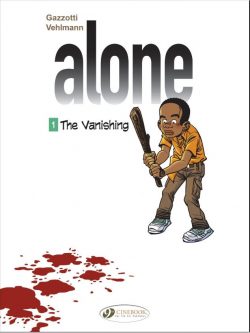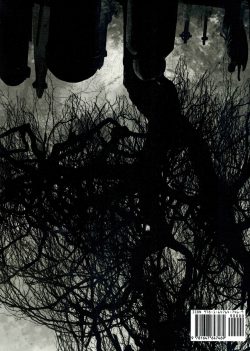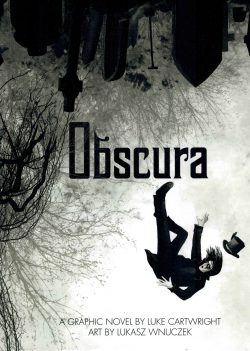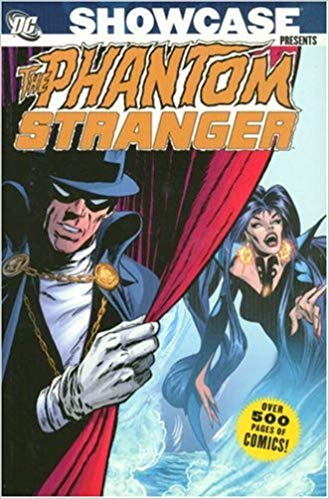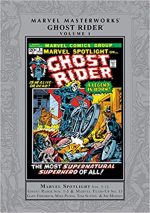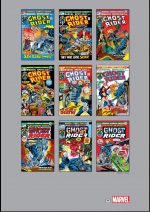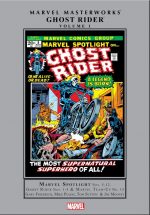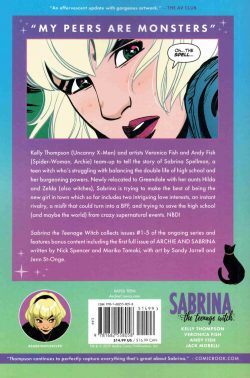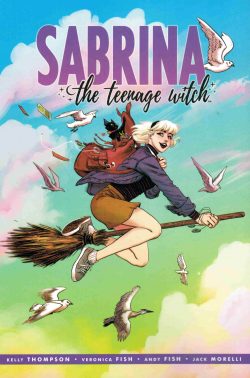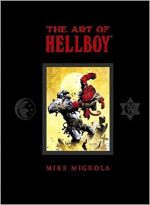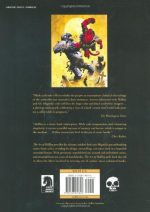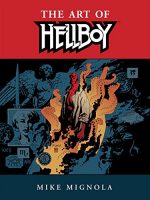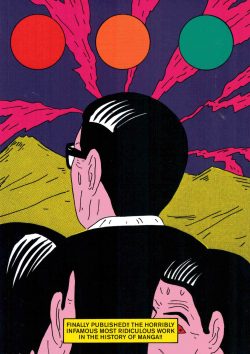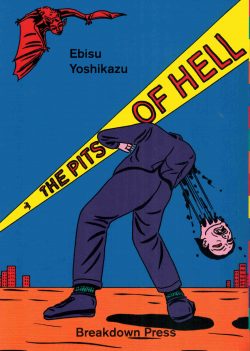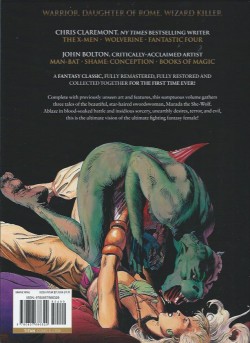
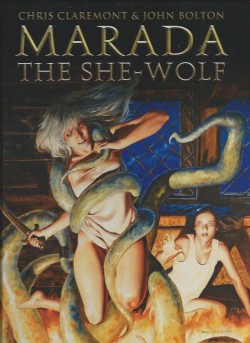
By Chris Claremont & John Bolton (Titan Books)
ISBN: 987-0-85768-632-9 (HB) (TPB)
Scantily clad hot chicks swinging swords have been a staple of fantasy comics from their very inception. It’s a meme that has endured even as we (some of us anyway) grew up a bit and discovered it’s just as prevalent in the movies and on TV. If it going to be a thing, at least let’s see it done properly and probably nobody has done it better – certainly visually – than Chris Claremont and John Bolton.
This recycled yet supremely satisfying, luxuriously oversized (302 x 226 mm) hardback compilation of their collaborative fantasy saga will satisfy all aficionados of wild adventure and stirring sagas – especially in a world where faux historical dramas like Game of Thrones and The Witcher are still garnering interest in “Things Old, Things Forgottenâ€â€¦
As detailed in Jo Duffy’s Introduction and collection Editor Steve Cook’s background essays ‘Birth of a Warrior’, ‘The Art of War’, ‘Epic Tales’ and ‘Legacy’, these stories – set in the cosmopolitan days of Imperial Rome – originated in Epic Illustrated (Marvel’s 1980’s response to Heavy Metal magazine) beginning with #10, February 1982.
Originally the strip appeared in beautiful monochrome wash-&-line, and although I would have preferred them to have been left that way for this collection, Bolton’s sensitive conversion of the art to painted colour is lush, lovely and stunningly effective.
By the way, that possibly waspish crack about recycling doesn’t just refer to the art, superb though it is. The original story started life as a Red Sonja yarn for monochrome anthology Bizarre Adventures, before Claremont & Bolton reworked the thing and, by inserting the whole kit and caboodle into the “real†world of the Ancient Roman – albeit embroidered with Celtic myth and legend – and added a satisfying layer of dramatic authenticity to the mix which still leaves it head-and-shoulders above all other Sword and Sorcery “Bad Girls†tales, as well as most fantasy fiction…
The literary pre-game warm-up also includes an effusive memo from the author as ‘Claremont on Bolton’ offers more creative insight on why these seldom-seen stories are just so darn good before the wonderment unfolds in the initial tale ‘Marada the She-Wolf: The Shattered Sword’.
The ferociously independent warrior woman is a wandering mercenary whose grandfather was Julius Caesar. When her parents fell into political disfavour, she was whisked from the Eternal City to live free and grow wild. Now, years later in the deserts near Damascus she is rescued from slavers by charismatic Warrior-Magician Donal MacLlyanllwyr. Strangely, the indomitable Marada he remembers is gone and all he liberates is a broken doll, traumatised by some unspoken horror and utterly devoid of will and spirit…
Mystically transporting her to the arboreal citadel of Ashandriar, amidst the misty hills of distant Britain, the baffled soldier seeks the aid of patron sorceress Rhiannon to diagnose, if not cure, her malady.
As Marada gradually recovers, she forms a bond with Donal’s daughter Arianrhod; a girl of vast, if unschooled, magical power. Before long, the ghastly secret of Marada’s malaise is revealed when a demonic creature invades the mystic keep, killing Donal and abducting Arianrhod.
Enraged and desperate, Marada braves Hell itself and slashes her way through an army of devils to rescue the child she now considers as much daughter as friend from a wizard and demon conclave. They initially broke the warrior woman as part of a convoluted scheme to reign on Earth…
The re-galvanised She-Wolf is ultimately victorious, but the horrific confrontation leaves her and Arianrhod stranded in East Africa. With no other option, the triumphant duo begin the long exhausting walk home to Albion…
From Epic #12, ‘Royal Hunt’ is a shorter, self-contained tale wherein Marada and Arianrhod, after escaping the Infernal Realm, are taken by Ashake, barbaric Empress of Amazonian nation of Meroë. The Battle Queen offers her captives the dubious distinction of being the quarry in a hunt (a competent if cheekily uninspired variation of Richard Connell’s landmark 1924 short story – and equally influential 1932 movie – The Most Dangerous Game).
Sadly, both predator and prey are unaware malign male mercenaries are lurking about, with the worst of all intentions for the unsuspecting women. Hard-fought combat and the sudden intervention of the sneaking male scum makes allies of Ashake and Marada, leading to the voyagers’ final tale, ‘Wizard’s Masque’ (Epic Illustrated #23-24, April & June 1984) which finds the long-lost Europeans aboard merchant ship Raven, bound for Roman port Massilia. However, impetuous Arianrhod gets bored with their slow progress and tries a transportation spell, opening a portal to nether realms and letting something really ghastly out of hell…
Beating the beast back, Marada falls though the gap in reality to materialise on an Arabic pirate ship currently engaged in a life-and-death clash with soldiers of an Eastern Kaydif. Her sudden presence turns the tide and soon she is partner to flamboyant corsair Taric Redhand, who swears to get her back to her home and lost “daughterâ€â€¦
Typically, Marada has also been noticed by sinisterly seductive sorcerer Jaffar Ibn Haroun Al-Rashid. Although he purports to be a friend – and potential lover – able to reunite her with The Raven, he conceals a connection to the same demonic alliance that originally targeted the She-Wolf in faraway Rome. He is also, in all things, a creature of passion and self-serving convictions, capable of absolutely anything to achieve his own ends…
Ultimately however, the wanderer knows she can only depend upon herself to find her way back to Arianrhod and home…
Moody, passionate and powerfully evocative, this is a classic work of comics fantasy that will certainly all delight fans of the genre.
© & ™ 2013 John Bolton and Christ Claremont. All rights reserved.


